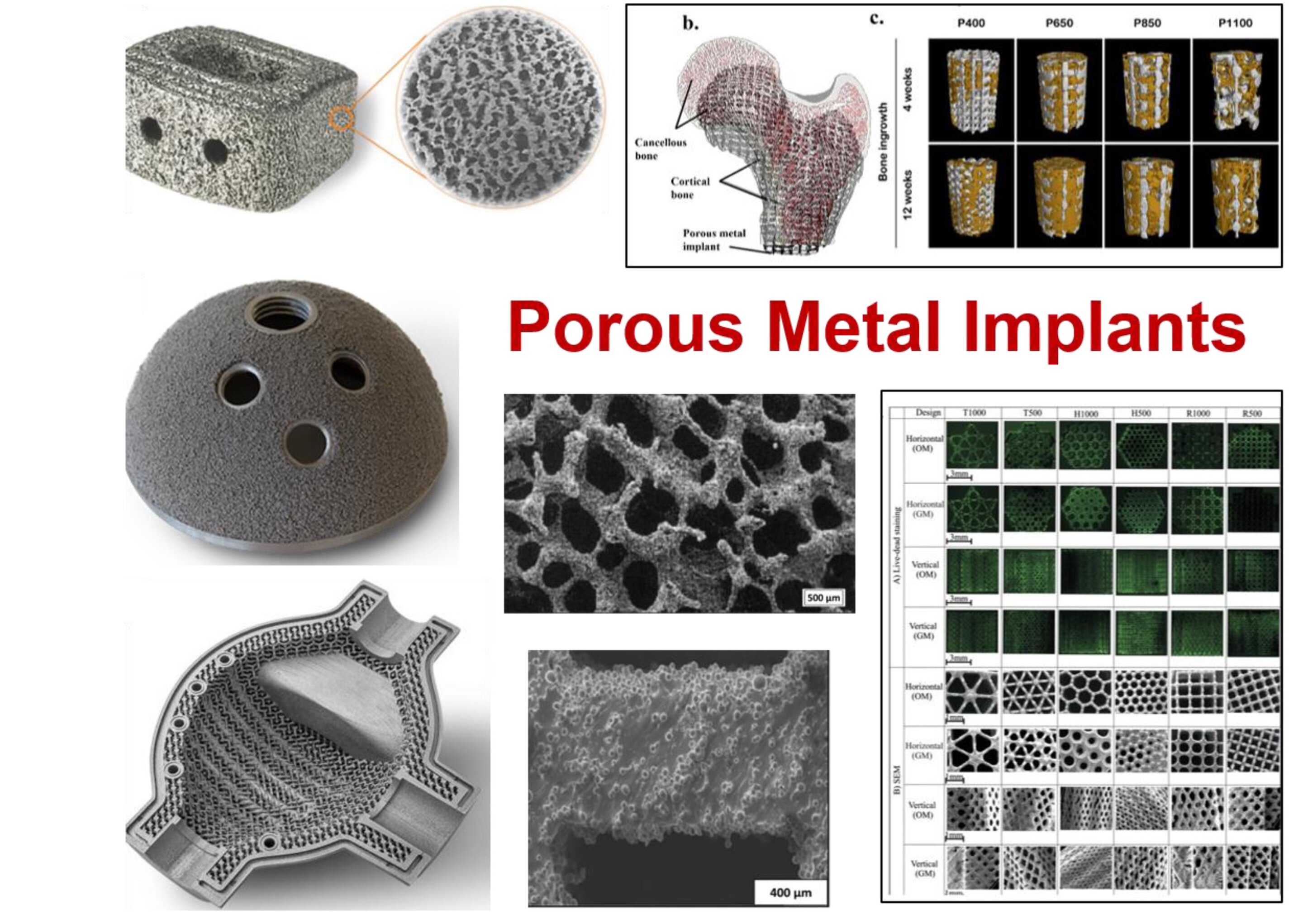The fabrication and application of porous metallic implants are discussed in detail by Prof. Amit Bandyopadhyay’s research group at Washington State University. This knowledge-based discussion explores the challenges and potential future directions in this field.
The research review, published in the International Journal of Extreme Manufacturing, compares various manufacturing methods for porous or functionally graded metals. The focus is on how the manufacturing process impacts microstructure, graded composition, porosity, biocompatibility, and mechanical properties.
While most of the studies discussed in this review are related to bone implant applications, the insights gained can also be applied to other devices beyond the biomedical field.
“Although the commercial investigation into porous metals began in 1925, progress was slow until the 1980s. Since then, the availability of different porous metallic materials for various applications has steadily increased. In recent years, porous and functionally graded materials have found extensive applications in orthopedic and dental implants,” explained Prof. Amit Bandyopadhyay, the Boeing Distinguished Professor at Washington State University and the review’s first and corresponding author.
Extensive research has shown that porous metallic structures in biomedical devices offer advantages in terms of biological and biomechanical compatibility with the host bone. The use of porous metals in orthopedic implants initially started with osseointegration devices. However, with an increasingly youthful population, implants often undergo more significant mechanical stresses and higher exposure rates.
“Therefore, there is a need for improved implant performance and lifespan. It is highly significant to investigate and innovate porous metallic implant structures with stiffness similar to bone and interconnected porosity. These implants should promote metabolite and nutrient exchange, facilitate bone ingrowth, and enhance implant-tissue anchorage and interfacial strength. The mechanical properties and applicability of porous structures for load-bearing implantation sites depend on factors such as pore interconnectivity, open porosity, pore size, phases present, compositional variations, and grain size,” Prof. Bandyopadhyay commented.
Many studies focusing on porous metal applicability as implants or novel fabrication techniques evaluate mechanical properties, corrosion resistance, fatigue resistance, and biological compatibility. These aspects are directly linked to cell morphology, which can influence cell attachment and integration into host tissue.
Prof. Bandyopadhyay’s research interests lie at the interface of materials science and engineering, advanced manufacturing technologies, and biomedical engineering. He particularly emphasizes 3D printing or additive manufacturing for load-bearing implants, bone-tissue engineering, and materials for space and aerospace structures. Since 1995, he has been actively involved in 3D printing research, publishing over 370 technical articles and holding 21 issued patents.
In 2003, Prof. Bandyopadhyay and his team proposed the concept of “3D Printed (3DP) porous metals for load-bearing implants,” receiving a grant from the W. M. Keck Foundation to initiate the research at Washington State University. Over the years, they have published numerous papers on this concept and obtained several US patents. Today, the concept of porous metal implants manufactured via metal 3DP is accepted worldwide, with over 150,000 implants produced in 2021 for human use, making it Prof. Bandyopadhyay’s most significant research contribution.
Prof. Bandyopadhyay is a fellow of prestigious organizations such as the American Association for the Advancement of Science (AAAS), Society of Manufacturing Engineers (SME), National Academy of Inventors (NAI), American Society for Materials (ASM International), American Institute for Medical and Biological Engineering (AIMBE), and American Ceramic Society (ACerS). He was elected to the Washington State Academy of Sciences (WSAS) in 2017.
According to Prof. Bandyopadhyay, the next decade will witness a remarkable increase in the production of 3D printed porous metallic implants for various applications, from hip and knee replacements to spinal, craniomaxillofacial, and dental implants. The projected growth is expected to reach 4 million implants per year worldwide, fueled by traditional implants, innovative designs, and intelligent implants with sensors providing real-time feedback to clinicians.
“Understanding the interactions between processing and properties is crucial for maintaining reliability and reproducibility in the manufacturing of these implants. This critical review article is designed for engineers, scientists, clinicians, and business leaders,” concluded Prof. Bandyopadhyay.
More information:
Amit Bandyopadhyay et al, Porous metal implants: processing, properties, and challenges, International Journal of Extreme Manufacturing (2023). DOI: 10.1088/2631-7990/acdd35
Provided by International Journal of Extreme Manufacturing
Citation:
Investigating the porous metals in orthopedic implants and beyond (2023, July 13) retrieved 14 July 2023
from https://phys.org/news/2023-07-porous-metals-orthopedic-implants.html
This document is subject to copyright. Apart from any fair dealing for the purpose of private study or research, no
part may be reproduced without the written permission. The content is provided for information purposes only.
Denial of responsibility! TechCodex is an automatic aggregator of the all world’s media. In each content, the hyperlink to the primary source is specified. All trademarks belong to their rightful owners, and all materials to their authors. For any complaint, please reach us at – [email protected]. We will take necessary action within 24 hours.

Jessica Irvine is a tech enthusiast specializing in gadgets. From smart home devices to cutting-edge electronics, Jessica explores the world of consumer tech, offering readers comprehensive reviews, hands-on experiences, and expert insights into the coolest and most innovative gadgets on the market.


